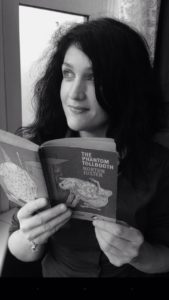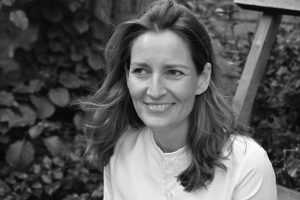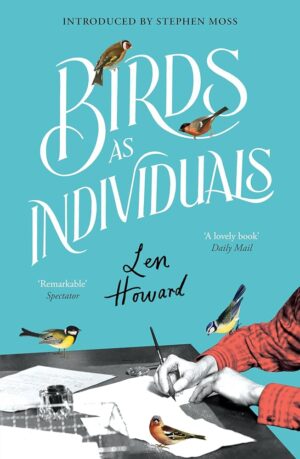A delightful read for fans of nature writing, bird life, and old-school English eccentrics, the 1952 book, Birds as Individuals by Len Howard has been deservedly reprinted as a Vintage Classic. The author, Gwendolen (Len) Howard left her life as an orchestral musician in London in the late 1930’s, to pursue her calling as a naturalist in the Sussex countryside. Here, she built a small house, Bird Cottage, threw the doors and windows open to the birds of her garden, and lived the rest of her days in intimate observation of her avian housemates and (literal) bedfellows.
Howard’s unconventional study was born of her conviction that much previous avian research had been inaccurate. Observers had not allowed for the fact that fear drives much bird behaviour, ergo our feathered friends are inauthentic around humans, who are potentially their greatest enemy. Howard believed that birds are possessed of great intelligence and individual personality, that would come to the fore once trust was gained. In this spirit, she gifted them an orchard garden of wild fruits and grasses, and herself as housekeeper, there to chase off predatory cats and foxes and quietly document the lives of her unorthodox lodgers, even whilst the mischief makers amongst them pulled Howard’s hair, tweaked her ears, and perched on her typewriter as she typed.
So it is that we’re welcomed into the world of Bird Cottage and generations of bird families who often experience more drama than an episode of Eastenders. We observe usually monogamous types engaging in dalliances, deserted partners apparently expiring from grief, and many examples of alpha male outbursts. One particularly assertive blackbird insists on always marching into conflict carrying an oak leaf (never any other kind). In another instance, a warring father and son carry their familial grudges across years.
Relationships, nesting, the wonders of flight, Howard shares it all with us. They’re so clever, these creatures, she says, able to teach their young about the dangers of window panes, and also to find their way to the nearest bus stop, to greet her on her way home from town. She makes some amusing comments on their mating rituals too, the funniest being an observation of a female being wooed by a male who flies over to touch her beak, a bird’s kiss.
‘She leant forward to receive the touch, carefully wiping her beak on the branch as soon as his back was turned.’
The final section of the book concentrates on bird song, where Howard’s own professional musicianship comes into play. Her detailed analysis provides valuable and lasting insights into bird musicality, although here, as throughout, we learn practically nothing about her personal life.
At one point, Howard mentions the impossibility of leaving her flock for any length of time, because ‘so many disasters occur’ when she’s not there, a comment to make readers madly curious about the whys and wherefores of her isolation and this obvious mutual dependence. Sadly, a story she doesn’t want to share.
A map and photos accompany the text, and for further reference, check the BBC online archive for a captivating short video and interview with this marvellous, enigmatic woman: BBC Tonight, 1961, Bird Cottage.
Birds as Individuals by Len Howard is published by Collins, 223 pages.





